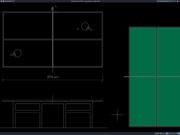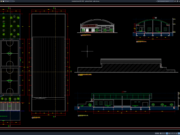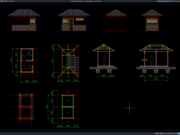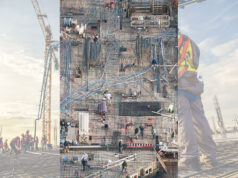 asdar.id menyediakan Member Premium Download untuk download file tanpa embel-embel iklan dan halaman, apa lagi harus menunggu timer yang begitu lama. Dengan berlangganan Member Premium Download, semua file dapat didownload dengan singkat langsung menuju ke sumbernya!, klik DISINI untuk DAFTAR atau DISINI untuk LOGIN :-) Jika ada pertanyaan silahkan hubungi Admin DISINI. Untuk cara download file Member Free Download, bisa membaca Tutorial Download yang ada dibawah Timer (halaman Safelink) saat menekan tombol download.
asdar.id menyediakan Member Premium Download untuk download file tanpa embel-embel iklan dan halaman, apa lagi harus menunggu timer yang begitu lama. Dengan berlangganan Member Premium Download, semua file dapat didownload dengan singkat langsung menuju ke sumbernya!, klik DISINI untuk DAFTAR atau DISINI untuk LOGIN :-) Jika ada pertanyaan silahkan hubungi Admin DISINI. Untuk cara download file Member Free Download, bisa membaca Tutorial Download yang ada dibawah Timer (halaman Safelink) saat menekan tombol download.Hello for all my friend on standby in darsitek, how are you everybody? This day i will write about 9 Important Photoshop Tips for Architects. A powerful software program like Photoshop can change the average looking picture or drawing right into a stellar asset for a task. The secret is to understand to use a few of its greatest features and boost your workflow for optimum efficiency.
Through the years Photoshop is just about the go-to tool for architects for just about any sort of image-based editing. The software is becoming indispensible because of its flexible features. It really is a powerful device for tweaking renderings or make them from scratch. Many of the most famous visualization performers rely intensely on Photoshop and make use of extremely crude masses performed in 3d applications as a starting place. From photorealistic renderings to editing photos of built tasks and beautifying series work, Photoshop is definitely an architect’s greatest friend.
1. non-destructive Workflow
Seeing that with any kind of software program, it is necessary to keep control of a task and invite yourself to return back and forth between measures without losing function. A nondestructive workflow can help you save considerable time and headache. Make use of masks and adjustment layers to protect flexibility, reduce the amount of layers in the layers palette so that you can experiment and tweak particular things and observe how they interact. Masks permit you to lower out elements of different layers and apply changes to specific regions of the picture. Group layers and present them specific brands to avoid dilemma. If you duplicate a level and keep it as “Layer 1 copy,” it is simple to end up getting a messy document.
2. Smart Objects
Perhaps you have ever placed a graphic upon the canvas, scaled this back and then notice a reduction in quality? This is exactly what smart items can mitigate. They may be scaled down or up with their first size and rotated without shedding quality, unlike with a rasterized picture. Among the advantages of Smart Objects is usually how they conserve the Free of charge Transform choices that you connect with them. In the event that you distort a good Object, for example, and apply the transformation, your initial transformation it’s still obtainable if you want to change the transformation down the road. You can duplicate Wise Items with the duplicates behaving like situations. If you would like to focus on them separately select New Wise Object via Duplicate option.
3. Hotkeys
Using hotkeys may significantly increase your workflow. Figure out how to utilize the keyboard to quickly gain access to particular features and choices. Here are a few of the hotkeys you’ll want the most:
Create a coating: MAC: Change+Cmd+NWINDOWS: Change+Ctrl+N
Flatten layers: Macintosh: Cmd+Alt+Change+EWINDOWS: Ctrl+Alt+Shift+E
Invert selection: Macintosh: Cmd+Change+IWINDOWS: Ctrl+Change+I
Deselect the complete image: Macintosh: Cmd+DWINDOWS: Ctrl+D
New layer via duplicate: Macintosh: Cmd+JWINDOWS: Ctrl+J
New layer via trim:MAC: Cmd+Change+JWINDOWS: Ctrl+Change+J
Increase/lower brush size: Macintosh: ]/[WINDOWS: ]/[
Free Transform:Macintosh: Cmd+TWINDOWS: Cmd+T
Blending modes:Macintosh: Shift+as well as(+) or minus(-)Home windows: Shift+as well as(+) or minus(-)
Change picture size: Macintosh: Cmd+Opt+iWINDOWS: Ctrl+Alt+i
Switch canvas size:MAC: Cmd+Opt+cWINDOWS: Ctrl+Alt+c
4. Sample Colours Outside Photoshop
Rather than importing a graphic into Photoshop simply so that you can sample a particular color, you can choose the Eyedropper tool, left-click, hold and drag the cursor anywhere beyond Photoshop (desktop, other folders, images, browser, etc.).
5. Protect your Images
As a specialist, you’ll be mailing Photoshop files to customers possibly. It is necessary to secure your projects and make certain clients don’t utilize it without your authorization or involvement. You can encrypt the file in order that it takes a password to edit or print. You can save it as a PDF, and choose Protection, permissions and enter a password to avoid printing and editing then simply.
6. Reveal All
Whenever using different layers and placing images, you can skip the known fact there are hidden pixels beyond the canvas. That’s where Reveal All may become useful. Head to Picture > Reveal All to help make the canvas large more than enough to fit all of the pixels on every level.
7. Try Filters
Applying filter systems to images could be a memory-intensive task. Normally it takes a while to use a filtration system to a comparatively large image. For this reason it’s great to choose a smaller region and apply a filtration system to it as a check.
8. Match Color of a graphic
To keep up color regularity between several pictures of the same task, the Match Color control can help you save lots of time. You can open up both images-the source picture and the prospective image-as two individual pictures or layers, then choose Picture > Modifications > Match Color… and choose the foundation picture from the foundation pull-down menu. This reads the colour statistics in one picture and applies them to the additional. You can even adjust luminance, color fade and intensity.
9. Figure out how to Let Go
Tweaking pictures in Photoshop can easily consume a lot of your energy in the event that you don’t figure out how to make decisions. All of the choices and the usage of a nondestructive workflow are excellent, but can simply start you. It’s vital that you set a period framework for yourself rather than to get swept up in attempting all feasible styles. Figure out how to let go.
So many posts this time about 9 Important Photoshop Tips for Architects, hopefully useful for you. Do not forget to always share one kindness by sharing or sharing this article to friends in social media, thanks!













![√[PLUS GAMBAR]Download RAB Aparatur Gampong Format Excel gambar dan rab aparatur gampong](https://www.asdar.id/wp-content/uploads/2025/03/gambar-dan-rab-aparatur-gampong-180x135.jpg)






